| Photo of the month – January 2003 | [German version] |
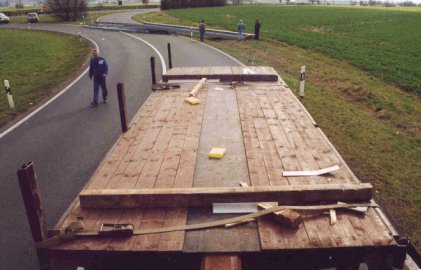
Figure 1
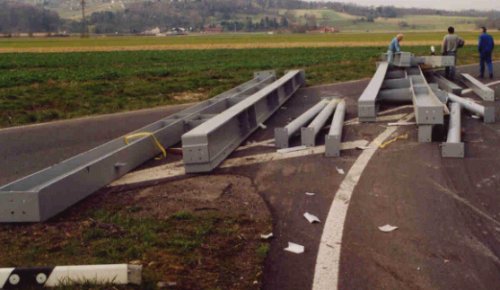
Figure 2
Shed steel:
An articulated truck carrying a load of steel beams was leaving the B 469, which has an upgraded highway-style layout, from an exit in the Mittenberg district. Due to the centrifugal forces arising while cornering in the exit, the steel beams, which had been loaded on their narrow edges, fell over on the loading area.
This made the tensioning belts and steel ropes ineffective. The steel parts slid sideways against the trailer’s stanchions, which collapsed under the impact. The tensioning belts and steel ropes tore away under the mass of the steel parts and the prevailing lateral forces.
The beams slid off the vehicle, over the opposite carriageway and buried themselves in the neighboring field. Any occupants in an oncoming vehicle would have had absolutely no chance of surviving. This is a lesson which must be learnt by those responsible for load securing.
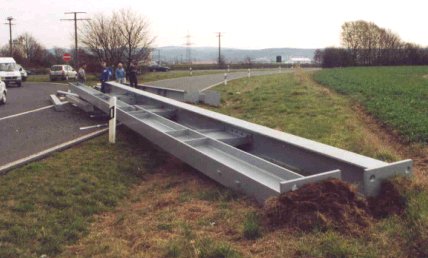
Figure 3
The following picture shows a tensioning belt and a steel rope which have been torn away:
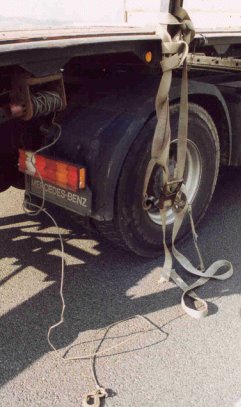
Figure 4
Even before this occasion, the tensioning belts were damaged and were already more than ready for "retirement". Even if the correct securing methods had been used, belts in such a condition would not have been able to retain this load:
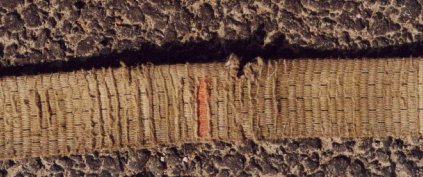
Figure 5
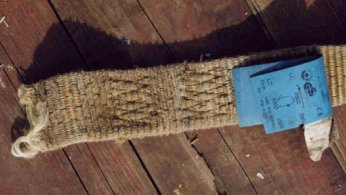
Figure 6
A stanchion wrenched off by the load:
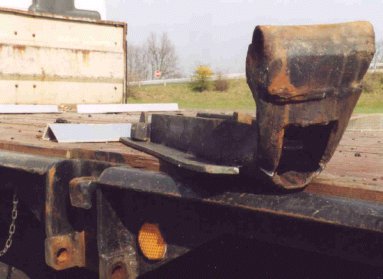
Figure 7
This steel rope has been torn out of the lashing point:
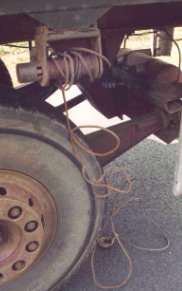
Figure 8
Using steel ropes for tie-down lashing is problematic as they have only very slight elasticity. Pretensioning forces can be reduced or completely dissipated by settling or slight shifting of the load. The only sensible way of using wire ropes for load securing is direct lashing, which exploits their physical strength.
[Photos: W.Prößler, VPI (traffic police inspectorate), Aschaffenburg]
How could the load have been adequately secured?
- Tight fit of the load to the front against the headboard, provided that the headboard is load-bearing. However, the maximum securing force for most headboards is 5,000 daN. This means that when a load of steel of this type is being carried, additional securing measures in the longitudinal direction are always required.
- Lateral securing can straightforwardly be provided with loop lashings. See the example on
page 211 in the GDV Cargo
Securing Manual.
- Where belts are used, they must be protected with suitable materials.
- Any securing method can be simplified or assisted by using friction-enhancing mats of a minimum thickness of 1 cm.
Zurück zum Anfang
